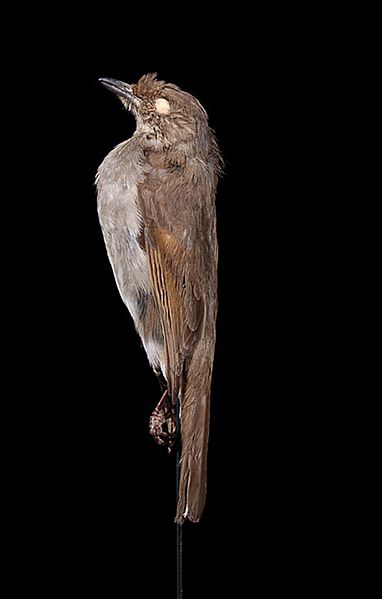
I usually blog about tree pests but the bioinvasion disasters in Hawai`i and Guam also attract my attention. I have blogged in the past about insect or pathogen threats to Hawaiʻi’s ‘ōhi‘a trees and other native plants of Hawaiʻi and Guam.
Some of the most difficult and tragic of the invasive species threats in Hawaiʻi are avian diseases vectored by introduced mosquitos. Avian pox and especially avian malaria have already caused extinction of numerous bird species, and continue to threaten many of the remaining endemic species.
I regret that it takes extinction to bring overdue attention to the threats to Hawaiian birds. The USFWS has proposed to remove eight species of Hawaiian birds and one from Guam from the list of endangered species because they are extinct.
[If you prefer to see living birds, visit here.]
Distressing as is the current determination of extinctions, it is just the tip of iceberg. Since people colonized the Hawaiian Islands 1,500 years ago, 71 bird species have become extinct, 48 before the arrival of Europeans and 23 since Captain James Cook’s arrival in 1778. Historically, more than 50 different honeycreepers lived in Hawaiʻi; today, only 17 species remain. Eight of these have been federally listed as endangered or threatened under the Endangered Species Act. A ninth bird species – a flycatcher – also has been listed. Another honeycreeper, i`iwi (Drepanis (Vestiaria) coccinea) is listed as threatened on Kauaʻi. As noted, the USFWS now says eight of these species (six honeycreepers, an ʻĀkepa, and one thrush) are actually extinct.
FWS will accept comments received or postmarked on or before November 29, 2021. To have an impact, comments must be substantive, not just a statement of support or opposition. The USFWS action includes 14 other species, among them the ivory-billed woodpecker, Bachman’s warbler, a bat, fish, and freshwater mussels.
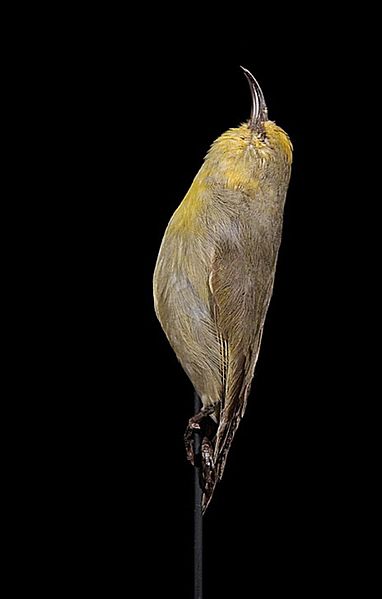
In describing the threats to the Pacific Island birds, the USFWS proposal focuses on non-native diseases, specifically avian pox and avian malaria. USFWS also mentions introduced vertebrates – especially predators such as cats, rats, and mongoose; and invasive plants. Because it does not deal with those bird species that continue to exist, the notice does not mention prospective threats. For example, constant vigilance is needed against possible introduction (from Guam) of the brown tree snake. Also needed is a strategy to counter rapid ‘ōhi‘a death, which threatens widespread mortality of the ‘ōhi‘a lehua tree (Metrosideros polymorpha).
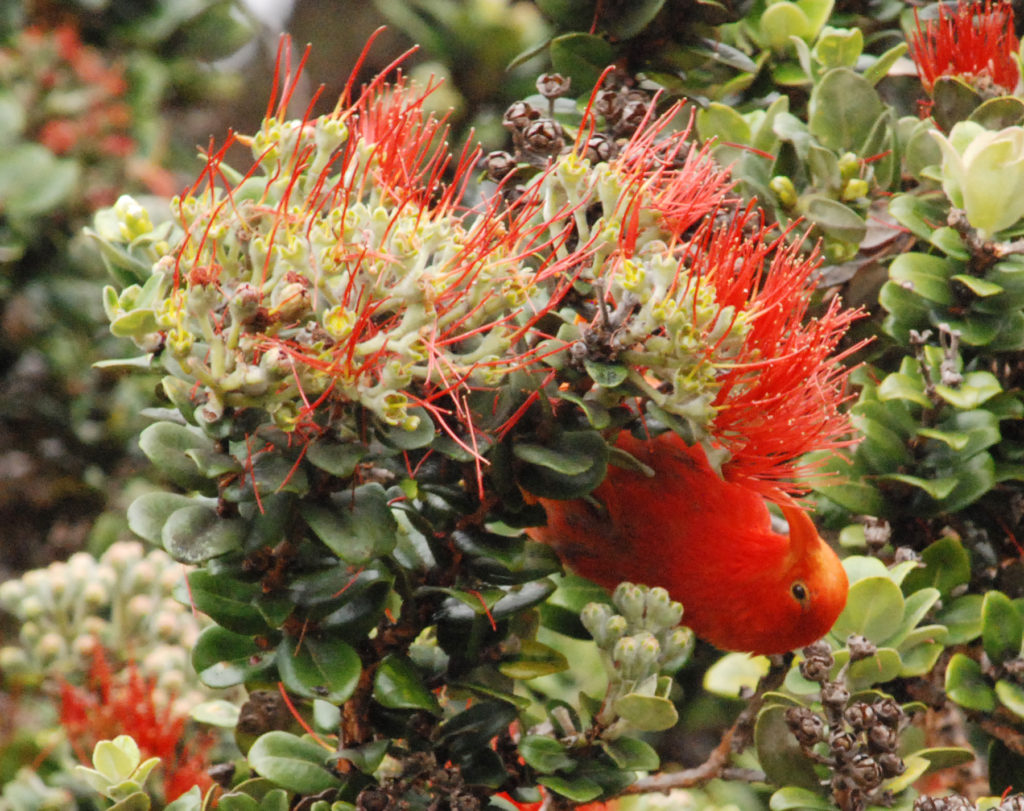
The USFWS proposal describes significant efforts over the past 50 years to restore bird species, including implementation of two recovery plans and numerous surveys trying to find remnant populations. However, none of these projects could counter the effects of the mosquito-vectored pox virus (Avipoxvirus) and avian malaria (Plasmodium relictum). The primary vector, Culex quinquefasciatus, was introduced to the islands in 1826. It has already reached the 6000 feet elevation level. Two other mosquitoes, Aedes albopictus and A. aegypti, may also spread avian pox. The former has been present in Hawai`i since 1896. The Aedes mosquitoes are – so far – at elevations of ~4,000 feet. However, they are expected to spread higher as the climate warms. The Hawaiian honeycreepers (subfamily Drepanidinae) are highly susceptible to these diseases. As a result, many of these bird species have disappeared from areas below ~ 4,500 feet (1,372 meters) over the last century.
One result of climate change is that mosquitoes are now able to penetrate even higher, up to 6000 feet. Only the islands of Hawai`i (the Big Island) and Maui have forests above this higher elevation.
The descriptions of the eight species purported to be extinct demonstrates the impact of many threats, but especially the diseases. Of the eight species, four are found on the island of Kauaʻi. Three were listed as endangered in 1967, when the U.S.’ first endangered species law came into force. The fourth was listed just a few years later, in 1970. The highest elevation on Kauaiʻ is 5,100 feet.
- Kauaʻi ʻakialoa (Akialoa stejnegeri) listed (as Hemignathus stejnegeri) in 1967, about the time of the last confirmed observations. The species used to be widespread on Kauaʻi and occupied all forest types above 656 feet (200 meters).
- Kauaʻi nukupuʻu (Hemignathus hanapepe) listed as endangered in 1967. At the time of listing, only two individuals had been reported during the 20th Century. The original extent of its geographic range is unknown.
- Kauaʻi ‘o‘o (Moho braccatus) listed as endangered in 1967. At the time of listing, the population size was estimated at 36 individuals. The last plausible record was a vocal response to a recording in 1987. Its last known habitat was the dense ‘ōhi‘a lehua forest in the valleys of Alakaʻi Wilderness Preserve. It reportedly fed on various invertebrates and the fruits and nectar from ‘ōhi‘a lehua, lobelia, and other flowering plants. The original extent of its geographic range is unknown.
- Large Kauaʻi thrush (Myadestes myadestinus) listed as endangered in 1970. At the time of listing, the population size was estimated at 337 individuals. The last unconfirmed and confirmed sightings occurred in the late 1980s.
Three of the putatively extinct species are found on the island of Maui. Maui’s highest point, Haleakalā, reaches 10,000 feet. Two of these species were listed in 1970. The third was discovered in 1973! This demonstrates how difficult it is to survey dense forests on steep, highly uneven volcanic slopes – especially when the substrate is a’a lava!
- Maui ʻĀkepa (Loxops coccineus ochraceus) listed (as Loxops ochraceus) in 1970. At the time of listing, its population was estimated at 230 individuals. The Maui ʻĀkepa preys on various insects and drinks the nectar of ‘ōhi‘a lehua flowers and uses the tree for nesting. The original extent of the geographical range is unknown, but thought probably to include Molokai and Lānaʻi. By the late 19th century all reports were from mid- to high-elevation forests; possibly the birds had already succumbed to the mosquito-vectored diseases. However, even recent surveys have been at too low intensity to definitively demonstrate that the species is extinct.
- Maui Nukupuʻu (Hemignathus lucidus affinis) listed (as Hemignathus affinis) in 1970. It probably formerly inhabited Molokai. Even in the late 19th century observers noted the restricted distribution and low population density of Maui nukupuʻu. The species was rediscovered in 1967 in the upper reaches of Kīpahulu Valley in Haleakalā National Park, East Maui. The last confirmed sighting was in 1996, from the nearby Hanawī Natural Area Reserve
- Po‘ouli (Melamprosops phaeosoma) listed as endangered in 1975, two years after its discovery. At the time of listing, its population was estimated at 140. Fossil evidence indicated it once had a much broader geographic and habitat range. It foraged on tree branches, preferring several native shrubs and trees, including ‘ōhi‘a lehua. Attempts were made to breed the species in captivity in the early 2000s, but these failed. The last two birds known to exist were last seen in December 2003 and January 2004.
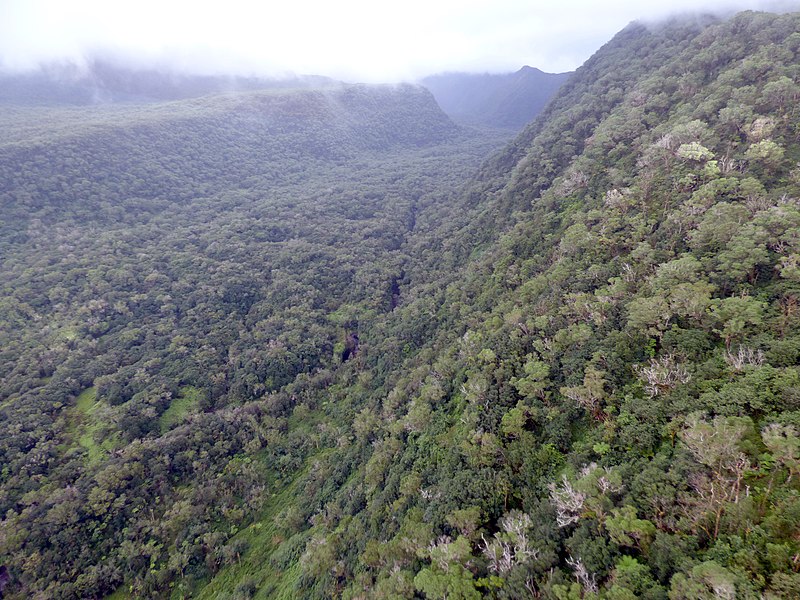
The eighth species is from Molokai, which has no elevation higher than 4900 feet.
- Molokai Creeper (Paroeomyza flammea) listed in 1970. At the time of listing, the Molokai creeper was considered extremely rare. It gleaned insects from vegetation and bark in wet ‘ōhi‘a lehua, forests. Molokai creeper was common in 1907, but by the 1930s, it was considered in danger of extinction. It was last detected in 1963.
Time is running out for Hawaiʻi’s native birds. In 2016 the USFWS listed yet another Hawaiian honeycreeper, the formerly ubiquitous ʻiʻiwi. (Drepanis (Vestiaria) coccinea), as threatened on Kauaʻi. Conservationists recognize the need to combat the mosquitoes.
While I mourn the recent extinction of several Hawaiian forest birds, I celebrate the decision by Hawaiian-based conservation entities to adopt innovative strategies to counter the invasive species threat.
An Innovative and Bold Initiative
The delisting proposal mentions a hopeful development: creation of a multi-agency consortium called “Birds, Not Mosquitoes”. Participating agencies include the Hawaiʻi Department of Land and Natural Resources, Hawaiʻi Department of Health, U.S. Fish and Wildlife Service, University of Hawaiʻi, U.S. Geological Survey, National Park Service, American Bird Conservancy, The Nature Conservancy of Hawaiʻi, Coordinating Group on Alien Pest Species, Island Conservation, and Pacific Rim Conservation. Also involved are the Kauaʻi Forest Bird Recovery Project, Maui Forest Bird Recovery Project, University of Kentucky, and Michigan State University.
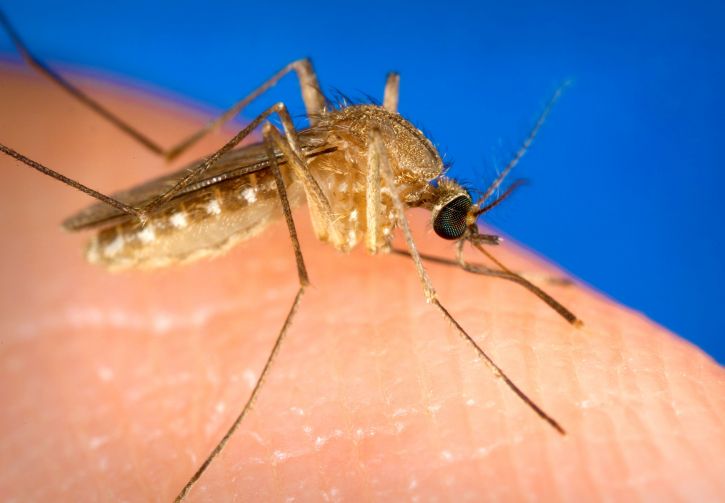
The partnership is exploring methods to suppress the mosquito populations. The current focus is on using a common, naturally-occurring bacteria as a “mosquito birth control”. Many insects, including some mosquitoes, carry a naturally-occurring bacterium, Wolbachia. If male and female mosquitoes of the same species carry different, “incompatible” strains of Wolbachia, the eggs wonʻt hatch. The Incompatible Insect Technique (IIT) currently under consideration would intentionally infect male mosquitoes with a specific strain of Wolbachia. These males would then be released to mate with the wild females – and produce infertile eggs. Male mosquitoes donʻt bite humans or birds; the female needs the blood meal to produce eggs.
This method has been successfully used around the globe to reduce populations of mosquitoes that carry human diseases such as dengue fever and malaria. Because of the conservation crisis, the “Birds, Not Mosquitoes” program is seeking permits to moves the project forward as quickly as possible while also ensuring full compliance with all state and federal requirements. Small trial releases would need to happen first to validate success in the field, with larger landscape-scale releases to follow.
Research in Hawaiʻi that is not part of the multi-agency “Birds not Mosquitoes” project is exploring genetic techniques to control mosquitoes. Any such strategy must meet careful safety standards and be registered with federal agencies and within Hawai‘i before use. Because any genetic technique to control mosquitoes is assumed to be more than a decade away and could face considerable public opposition, it likely would not be available in time to prevent additional extinctions of Hawaiʻi’s endemic forest birds.
The “Birds, Not Mosquitoes program” is a multi-year effort to develop the tool, establish the best approach for deploying the tool, and then sustain the effort to keep invasive mosquito populations suppressed. Success can save at least 12 bird species in Hawai`i from extinction, and benefit many more. Funding needs over the next five years are:
* FY2022 – $3 Million
* FY2023 – $5 Million
* FY2024 – 2026 – $7 Million per year
Please contact your Representative and Senators and urge them to support funding for this effort in the Interior Appropriations bills for the coming years.
SOURCE
DEPARTMENT OF THE INTERIOR Fish and Wildlife Service Endangered and Threatened Wildlife and Plants; Removal of 23 Extinct Species From the Lists of Endangered and Threatened Wildlife and Plants ACTION: Proposed rule. 50 CFR Part 17 Federal Register / Vol. 86, No. 187 / Thursday, September 30, 2021
Posted by Faith Campbell
We welcome comments that supplement or correct factual information, suggest new approaches, or promote thoughtful consideration. We post comments that disagree with us — but not those we judge to be not civil or inflammatory.
For a detailed discussion of the policies and practices that have allowed these pests to enter and spread – and that do not promote effective restoration strategies – review the Fading Forests report at http://treeimprovement.utk.edu/FadingForests.htm